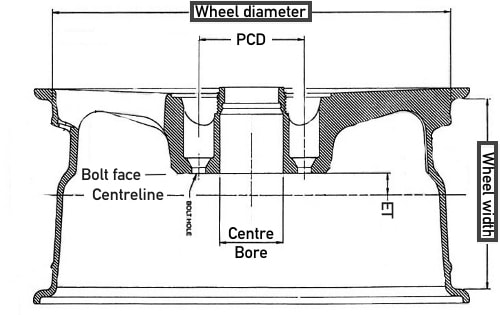Expert AdviceGot a question about your tyres, wheels or the services that we provide? We've compiled a list of the most common queries that we receive from our customers. If you still can't find what you're looking for, contact our team who will be happy to help.
|
InformationWheels |
Wheel SizeThe size of an alloy wheel is calculated by the following equation; Diameter x Width (15 x 6.5J). The section between the mounting flanges on the wheel is known as the wheel width.
Diameter The diameter of a wheel can be found by measuring across the face of a given alloy wheel (excluding the lip flange) making sure to pass directly through the centre of the wheel. You need to compensate for the mounting flange as they are not included in the measurement. Width The width of a wheel can be found by measuring across the wheel from front to back (Also called the “Depth”) Again the mounting flange is to be ignored and just a measurement of the inner barrel is to be taken to determine the true width of an alloy wheel. Adding wider wheels increases a vehicles track and can aid handling if also equipped with slightly wider tyres than standard. Each car has a certain range of alloy wheel widths that can be fitted safely. Go too wide and you’ll most likely end up with some sort of scraping, either on the inner strut or outer arch. Both potentially dangerous situations if it causes a tyre blowout at speed! |









